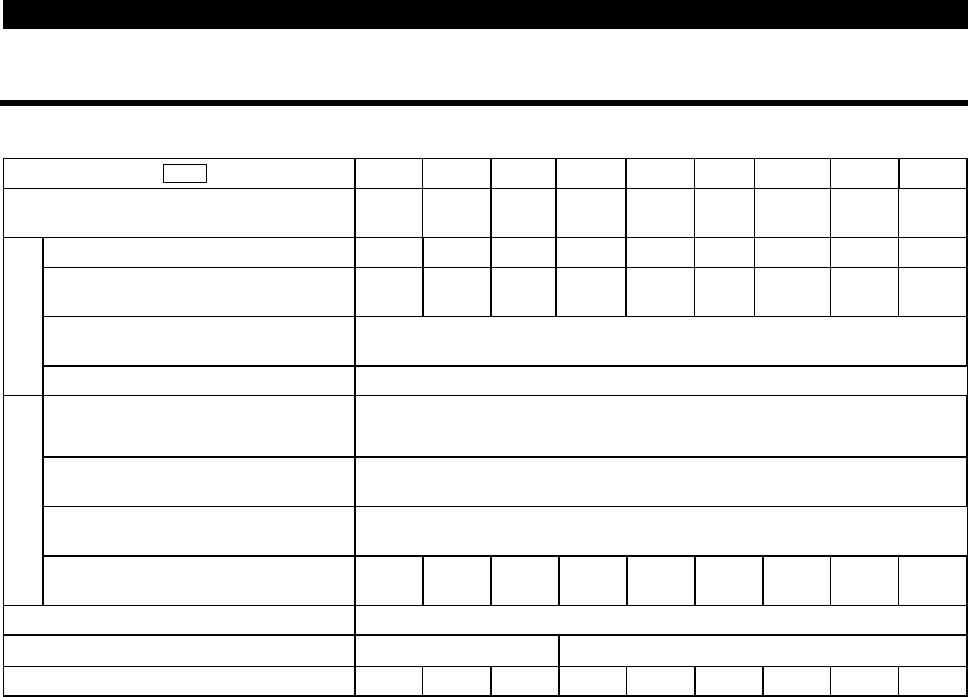
6.1 Standard Specifications
SPECIFICATIONS
149
6 SPECIFICATIONS
6.1 Standard Specifications
6.1.1 Model specifications
"
""
"
3-phase 200V power supply
Type FR-E520- KND 0.1 0.2 0.4 0.75 1.5 2.2 3.7 5.5 7.5
Applicable motor capacity (kW)
(Note 1)
0.1 0.2 0.4 0.75 1.5 2.2 3.7 5.5 7.5
Rated capacity (kVA) (Note 2) 0.3 0.6 1.2 2.0 3.2
4.4 7.0
9.5 13.1
Rated current (A) (Note 6)
0.8
(0.8)
1.5
(1.4)
3
(2.5)
5
(4.1)
8
(7)
11
(10)
17.5
(16.5)
24
(23)
33
(31)
Overload capacity (Note 3)
150% 60s 200% 0.5s
(inverse-time characteristics)
Output
Voltage (Note 4) Three phase, 200V to 240V 50Hz/60Hz
Rated input AC (DC) voltage,
frequency
Three phase, 200V to 240V 50Hz/60Hz
(280VDC, Note 7)
Permissible AC (DC) voltage
fluctuation
170 to 264V 50Hz/60Hz
(252 to 310VDC, Note 7)
Permissible frequency
fluctuation
±
5%
Power supply
Power supply system capacity
(kVA) (Note 5)
0.4 0.8 1.5 2.5 4.5 5.5 9 12 17
Protective structure (JEM1030) Enclosed type (IP20)
Cooling system
Self-cooling
Forced air cooling
Approximate weight (kg) 0.6 0.6 0.8 1.0 1.7 1.7 2.2 4.4 4.9
Note:1. The applicable motor capacity indicated is the maximum capacity applicable
when a Mitsubishi 4-pole standard motor is used.
2. The rated output capacity indicated assumes that the output voltage is 230V.
3. The overload capacity indicated in % is the ratio of the overload current to the
inverter's rated current. For repeated duty, allow time for the inverter and
motor to return to or below the temperatures under 100% load.
4. The maximum output voltage cannot exceed the power supply voltage. The
maximum output voltage may be set as desired below the power supply
voltage. However, the crest value of the inverter output voltage remains
unchanged from the DC bus voltage.
5. The power supply capacity changes with the values of the power supply side
inverter impedances (including those of the input reactor and cables).
6. The rated output current in the parentheses applies when low acoustic noise
operation is to be performed at the ambient temperature higher than 40
°
C with
the Pr. 72 (PWM frequency selection) value set to 2kHz or higher.
7. When using a DC power supply
(1) The guideline for the power supply voltage fluctuation range is 280VDC
±
10%, and usually use the power supply at or below 300VDC.
(2) When DC power is switched on, a larger inrush current flows than in AC
power. The number of power-on times should be minimized.
(3) 300VDC must be reserved to make the torque characteristic equal to when
AC power supply is used.


















